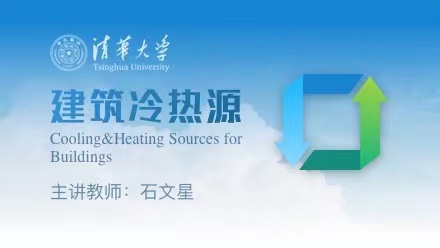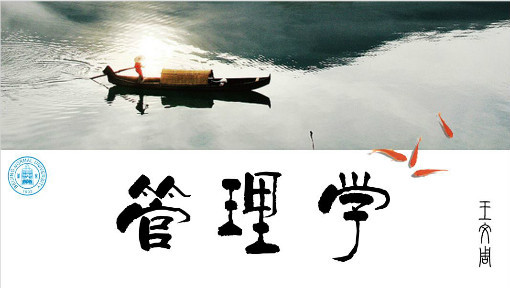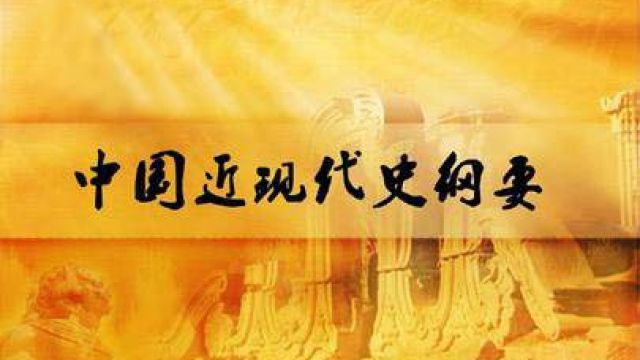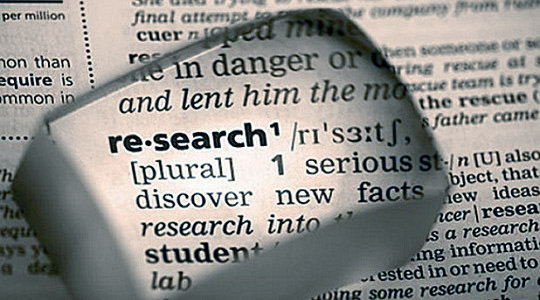
当前课程知识点:Western and Chinese Art: Masters and Classics > 3.Mythological creation of beauty: From Homer to Phidias > 3.3 Three greatest tragedy drammatists in Greece > Three greatest tragedy drammatists in Greece
返回《Western and Chinese Art: Masters and Classics》慕课在线视频课程列表
返回《Western and Chinese Art: Masters and Classics》慕课在线视频列表
在荷马史诗的孕育之下
希腊文化的一个
伟大的结晶就是希腊的悲剧
希腊有三大悲剧家
埃斯库罗斯
索福克勒斯
和欧里庇得斯
亚里士多德专门
为希腊悲剧写了一部非常哲学的
批评性的著作叫《诗学》
在《诗学》当中
他是这样来定义希腊悲剧的
他说悲剧是对一个严肃完整
有一定长度的行动的摹仿
它的媒介是经过装饰的声音
以不同的形式
分别被用于戏剧的不同部分
它的摹仿方式是
借助人物的行动而不是叙述
通过引发怜悯和恐惧
使这些情感得到宣泄
亚里士多德对悲剧的这一个定义
包含了丰富的悲剧哲学思想
简单地讲亚里士多德认为
悲剧表现了希腊人对美的
一个根本的看法
就是美必须是严肃的完整的
而且它的长度是有限的
另外一方面呢他认为
悲剧要产生一种情感的净化
情感的净化
就是要使我们日常生活的情感
通过悲剧的熏陶提升到一种
亚里士多德认为类似于
神灵静观世界一样的那种
澄明的境界
所以他说悲剧是通过怜悯和恐惧
使这些情感得到宣泄
应该说悲剧的情感是双重的
一方面呢在现实有限的层面
要让我们感到人生所具有的
那种难以避免的厄运
或者恐惧或者令人怜悯
但是另一方面呢
这些情感并不是我们要保留的
所以它是必须被净化了
净化之后呢是要让我们看到什么
看到整个悲剧它的完整形式
所呈现的世界的完整秩序
所以亚里士多德特别强调
悲剧形式的完整性
就是索福克勒斯的《俄狄浦斯王》
《俄狄浦斯王》这出悲剧表现了
希腊文化精神的一个重要转变
这就是从希腊神话时期的人
完全拒服于不可掌控的自然命运
转换到人努力去认知世界
探索自己的历史和可能
所以我们现在来看
俄狄浦斯这一段剧中独白
就是当他向他母亲追问
你的儿子究竟是谁
你究竟怎样对待你的儿子
我是不是就是你的儿子等等
他的母亲已经知道她面前的
俄狄浦斯就是她的亲生儿子
也就是杀父娶母的俄狄浦斯
这时俄狄浦斯的母亲非常悲痛
而且她很痛苦地请求她的儿子
俄狄浦斯不要再追究
俄狄浦斯说要发生就发生吧
即使我的出生卑贱
我也要弄清楚那女人
女人总是很高傲的
她也许因为我出生卑贱感觉羞耻
但是我认为我是仁慈的
幸运的宠儿不至于受辱
幸运是我的母亲
十二个月份是我的弟兄
他们能画出我什么时候渺小
什么时候伟大
这就是我的身世
我绝不会证明是另一个人
因此我一定要追问我的血统
他的这种不怕任何危险
坚定执著地要追问自己的身世
或者说血统的这种精神
实际上在此前的希腊文化当中
是没有的
他表现的是希腊人的
理性的自觉
希腊人追求真理的一种精神
所以希腊悲剧脱胎于希腊神话
但是它与希腊神话有根本的区别
因为希腊神话强调的
是人和自然的统一
是人神一体所以以命运
为人生的主导
而在希腊悲剧当中如俄狄浦斯
他是反抗命运地去追寻自己的历史
去认识自己和世界的关系
因此希腊悲剧表达了希腊精神的
这样一个关键点
就是希腊民主的发展
独特的希腊人
就是所谓自由的希腊人
不包括奴隶和女人
希腊人或者说希腊的自由公民
他们在希腊民主体制之下
产生了自我意识
自我责任感
所以认知世界超越自己的有限性
变成当时的希腊文化的
新的精神取向
这种新的精神取向
就导致了人作为有限的存在者
要追求无限的理性
面对无限的世界
必然要面对自我的悲剧性
也就是有限性
亚里士多德说俄狄浦斯的悲剧
是一个比普通人更伟大的人
犯了过失而遭遇不应有的
残酷惩罚的悲剧
他不是罪有应得而是受罚过重
所以对于我们观众来说
会产生恐惧和怜悯
亚里士多德强调悲剧的原因
不是像希腊神话所指出的那样
人的悲剧来自于命运
而是指出人的悲剧
来自于人作为有限的存在者
必然要犯的过失
这就是说人在突破自己的
有限的时候
面对无限彰显的是有限者的悲剧
这就是悲剧的哲学意义
但是亚里士多德特别强调一点
悲剧一定要给大家一个完整的形式
要让大家感到秩序的清晰明确
和整个悲剧作为一个事件的整体性
其实就是要让大家超越有限
去感受到无限的整体感
-1.1Factual impairment between image and message
--Factual impairment between image and message
-1.2Relationship between Fact and Truth
--Relationship between Fact and Truth
-1.3The image revelry in the information age
--The image revelry in the information age
-1.4 Nature, animal and human body art
--Nature, animal and human body art
-1.5 Art: from concrete bodies to metaphorical constructions
--Art: from concrete bodies to metaphorical constructions
-1.6 On defining art
-1.7 Globalization and Consumerism
--Globalization and Consumerism
-1.8 Art and Anti-art
-1.9The value classics hold to the modern time
--The value classics hold to the modern time
-Homework1
-2.1 The occurrence of prehistoric art
--The occurrence of prehistoric art
-2.2 Mysterious cave mural paintings
--Mysterious cave mural paintings
-2.3 Symbolism of rock engravings
--Symbolism of rock engravings
-2.4 Expressive functions about prehistoric painting
--Expressive functions about prehistoric painting
-2.5 Aesthetic characters of prehistoric art
--Aesthetic characters of prehistoric art
-2.6 The tribal art of bodily operation
--The tribal art of bodily operation
-2.7 The construction to reach the heaven
--The construction to reach the heaven
-2.8 Immortal art in ancient Egyptian
-- Immortal art in ancient Egyptian
-Homework2
-3.1 The relationship between mythology and Greek culture
--The relationship between mythology and Greek culture
-3.2 The marks of the epics written by Homer
--The marks of the epics written by Homer
-3.3 Three greatest tragedy drammatists in Greece
--Three greatest tragedy drammatists in Greece
-3.4 The aesthetics woven into ancient Greek architecture
--The aesthetics woven into ancient Greek architecture
-3.5 The ancient Greek sculpture
-3.6 The Greek sculpture of the classic age
--The Greek sculpture of the classic age
-3.7 Works of Phidias
-3.8 The essence and verve of ancient Greek classical art
--The essence and verve of ancient Greek classical art
-Homework3
-4.1The beginning of Chinese painting and Calligraphy
--The beginning of Chinese painting and Calligraphy
-4.2 Majesty and divinity from bronze ware
--Majesty and divinity from bronze ware
-4.3 The Duke Mao Tripod and eternal characters
--The Duke Mao Tripod and eternal characters
-4.4The Philosophy of Chuang Tzu
--The Philosophy of Chuang Tzu
-4.5Qin Shi Huang’s Terracotta Warriors
--Qin Shi Huang’s Terracotta Warriors
-4.6The painting in the Han Dynasty
--The painting in the Han Dynasty
-4.7 The sculpture in the Han Dynasty
--The sculpture in the Han Dynasty
-Homework4
-5.1Master Chuang Tzu's impact on the Wei and Jin Dynasties
--Master Chuang Tzu's impact on the Wei and Jin Dynasties
-5.2Talking about Ji Kang
-5.3 The general spirit of the Wei and Jin Dynasties
--The general spirit of the Wei and Jin Dynasties
-5.4 Wang Xizhi and his unrivalled attainment in calligraphy
--Wang Xizhi and his unrivalled attainment in calligraphy
-5.5 A Preface to the Orchid Pavilion
-- A Preface to the Orchid Pavilion
-5.6 The penmanship of two famous calligraphers surnamed Wang
--The penmanship of two famous calligraphers surnamed Wang
-5.7Gu Kaizhi and his painting
-5.8 Great poet Tao Yuanming
-Homework5
-6.1The Chan School in the Tang dynasty
--The Chan School in the Tang dynasty
-6.2“Cursive King”: Zhang Xu
-6.3《Four Calligraphy Works of Ancient Poems》
--《Four Calligraphy Works of Ancient Poems》
-6.4Zhang Xu and Huai Su
-6.5Wu Daozi and his paintings
-6.6Wang Wei and Chinese landscape painting
--Wang Wei and Chinese landscape painting
-6.7The relation of painting and poetry
--The relation of painting and poetry
-Homework6
-7.1 The beginning of Renaissance: Giotto
--The beginning of Renaissance: Giotto
-7.2 Giotto’s naturalism
-7.3 The frescoes in the Arenal Chapel
--The frescoes in the Arenal Chapel
-7.4 The Renaissance artist in north Europe: Robert Campin
--The Renaissance artist in north Europe: Robert Campin
-7.5 The Ghent Altarpiece
-7.6 Jan Van Eyck’s secular paintings
-- Jan Van Eyck’s secular paintings
-Homework7
-8.1 The beauty of dawn during Renaissance
--The beauty of dawn during Renaissance
-8.2 The reproducer of nature: Da Vinci
--The reproducer of nature: Da Vinci
-8.3 The immortal work Mona Lisa
-8.4 The classicism of Raphael
-8.5 The Sistine Chapel ceiling
-8.6 The mythology and sculpture of Moses
--The mythology and sculpture of Moses
-8.7 Michelangelo's struggle between life and death
-- Michelangelo's struggle between life and death
-8.8 The perceptual Titian and Venice
--The perceptual Titian and Venice
-Homework8
-9.1Rubens and the Baroque Art
-9.2Poussin and his classical spirit
--Poussin and his classical spirit
-9.3Rembrandt and his aptitude of wielding light and shadow
--Rembrandt and his aptitude of wielding light and shadow
-9.4 Rembrandt in his self-portrait
--Rembrandt in his self-portrait
-9.5 Vermeer and his painting
-Homework9
-10.1Landscape painting from the Five Dynasties period to the Northern Song Dynasty
--Landscape painting from the Five Dynasties period to the Northern Song Dynasty
-10.2 Creating painting out of poetry by Emperor Huizong of Song
--Creating painting out of poetry by Emperor Huizong of Song
-10.3 Viewing the small through the large
--Viewing the small through the large
-10.4 Combining the tangible with the intangible
--Combining the tangible with the intangible
-10.5 The atmosphere of freedom, detachedness and ease of landscape painting
-- The atmosphere of freedom, detachedness and ease of landscape painting
-10.6 Dwelling in the Fuchun Mountains
--Dwelling in the Fuchun Mountains
-10.7 Friendliness in Ni Zan’s painting
--Friendliness in Ni Zan’s painting
-10.8 A pristine and boundless world in Ni Zan’s painting
--A pristine and boundless world in Ni Zan’s painting
-Homework10
-11.1The origin and expression of the madman culture
--The origin and expression of the madman culture
-11.2 The madman Li Zhi
-11.3 Xu Wei: from gifted scholar to mad man
--Xu Wei: from gifted scholar to mad man
-11.4 The aesthetic ideology of Xu Wei
--The aesthetic ideology of Xu Wei
-11.5 Xu Wei’s notions and theories on painting practise
--Xu Wei’s notions and theories on painting practise
-11.6 Miscellaneous Plants and Flowers
--Miscellaneous Plants and Flowers
-11.7 Drunkenness in Xu Wei's art
-Homework11
-12.1 Winckelmann
-12.2 Neoclassical master: David
-12.3 The Death of Marat
-12.4 The Intervention of the Sabine Women
--The Intervention of the Sabine Women
-12.5 The aestheticism works by Ingres
--The aestheticism works by Ingres
-12.6 The contrast between photography and paintings
--The contrast between photography and paintings
-12.7 Courbet and realism
-Homework12
-13.1 Rousseau and emotionalism
-13.2 Kant's view about the beautiful and the sublime
--Kant's view about the beautiful and the sublime
-13.3 Goethe, from Werther to Faust
--Goethe, from Werther to Faust
-13.4 Byron, romantic hero
-13.5 The painting laws of Romanticism
--The painting laws of Romanticism
-13.6 John Constable
-13.7 The world of Turner
-Homework13
-14.1 Western modernism and Rodin
-14.2 The Gates of Hell
-14.3 Painting conception of Manet
--Painting conception of Manet
-14.4 Impressionism of Monet
-14.5 Cezanne:the Father of the art of modernism
--Cezanne:the Father of the art of modernism
-14.6 Van Gogh:painting and life
-14.7 The art value of Van Gogh
-Homework14
-15.1 art modernism
-15.2 porcelain urinal of Marcel Duchamp
--porcelain urinal of Marcel Duchamp
-15.3 This is not a pipe
-15.4 The great innovation artist: Picasso
--The great innovation artist: Picasso
-15.5 the infinity of art
-15.6 the art after Andy Warhol
-Homework15
-Final exam





